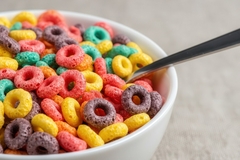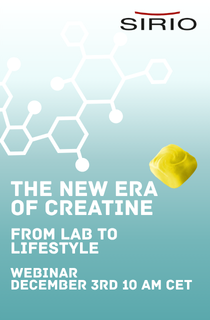Non-nutritive sweeteners debate: Monitoring sugar consumption is key to safety, says Elsevier study
29 Jul 2020 --- The purchasing of foods and beverages (F&B) containing caloric sweeteners (CS), or sugar, declined between 2002 and 2018 in the US, according to a new study. Within that same period, purchases of products containing both caloric sugars and non-nutritive sweeteners (NNS), or sugar substitutes, increased. These findings highlight that tracking of consumers’ exposure to specific types of sweeteners is needed to understand their health implications – a topic where the scientific community has not reached a consensus.
“When sugar is taken out [of F&B products], not only the sweetness but also the flavor and mouthfeel are significantly changed. For example, the flavor becomes flat and the mouthfeel becomes watery. Providing a natural sweetening solution that helps customers to maintain the sugar-like taste, flavor and mouthfeel is a priority,” Shasha Yu, Marketing Director at Sweet Green Fields, tells NutritionInsight. 
Meanwhile, Dr. Kavita Karnik, VP Global Nutrition and Open Innovation, shares with NutritionInsight that Tate & Lyle sees an increasing US demand for its “toolbox of sugar reduction solutions,” including stevia, monk fruit, allulose and sucralose. “With renewed interest in reducing the prevalence of obesity and desire for foods that support healthy living brought on by the pandemic, we anticipate continued growth in food and drink with reduced or no added sugar versions, including those created using sucralose and stevia Reb-A,” she states.
Notably, the study flags that the long-term and higher exposure to the variety of NNS and health is still unknown. “Given the unknown health implications, what is needed is some documentation of what is present and consumed. [This can help] assess the potential drawbacks or benefits of each of the various types of NNS,” says Dr. Shu Wen Ng, co-investigator and Associate Professor from the Gillings Global School of Public Health, US.
NNS include aspartame, saccharin, Reb A and sucralose, which provide sweetness to products without the calories of sugar.Some observational cohort studies have linked nutritive sweetener consumption to increase body weight, Type 2 diabetes and other adverse cardiometabolic outcomes, Dr. Ng continues, while others have found opposite effects. “Meanwhile, results from RCT and meta-analyses have failed to demonstrate a relationship between NNS and energy intake or increased consumption of sweet foods. So it is unclear if these findings are due to studies categorizing all NNS together rather than examining the specific types of the NNS and their outcomes.”
The culprits – or heroes?
NNS include aspartame, saccharin, rebaudioside A (Reb A), and sucralose, which provide sweetness to products without the calories of sugar or high fructose corn syrup. The study found a decline in prevalence of products containing aspartame and saccharin, but an increase in those with sucralose (increased from 39 to 71 percent) and Reb A (increased from 0.1 to 26 percent).
A consensus is notably lacking in the NNS safety discussion. Research from the University of South Australia found that NNS consumption did not have a clear effect on the incidence of Type 2 diabetes or on glycaemic control, despite there being some evidence revealing that artificial sweeteners can change gut bacteria and thus kickstart the development of Type 2 diabetes.
Last July, research from the University of Sussex revealed that aspartame, better known as Nutrasweet, is not adequately proven to be safe for human consumption, while the European Food Safety Authority reassured NutritionInsight of the contrary. The Calorie Control Council also butted heads with a Yale University study on sucralose-sweetened beverage consumption leading to insulin sensitivity.
 Sweet Green Fields has been developing stevia leaf-based stevia sweeteners for over a decade.As far as beverages are concerned, this category accounted for most of products purchased containing NNS only or combined with CS. Compared to households without children, households with children bought more packaged beverages and foods products that contain NNS. While this aligns with the public health objectives, it also raised other concerns about exposure to NNS.
Sweet Green Fields has been developing stevia leaf-based stevia sweeteners for over a decade.As far as beverages are concerned, this category accounted for most of products purchased containing NNS only or combined with CS. Compared to households without children, households with children bought more packaged beverages and foods products that contain NNS. While this aligns with the public health objectives, it also raised other concerns about exposure to NNS.
“The change to the food supply [that] our study documents reinforces the need to develop and maintain the data systems to monitor what companies are putting in their foods. This work can help complement new and emerging clinical evidence about the different cardiometabolic and health effects of each NNS type,” affirms Dr. Elizabeth Dunford. She is affiliated with UNC’s Gillings Global School of Public Health and Carolina Population Center at the University of North Carolina at Chapel Hill.
Industry reactions
While the academics keep their thinking caps strapped on, industry is tapping into the natural sweetness trend to assure consumers their products are clean label and as nature intended. In this space, Sweet Green Fields embarks on a “totally different path” to provide the sweet taste people like in a natural way.
“We have been developing and producing stevia leaf-based stevia sweeteners for more than ten years and have been exploring new taste modulation technology to improve consumer’s liking for naturally-sweetened food and beverages,” says Yu.
Meanwhile, Ingredion anticipates that the consumer interest in reducing sugar intake – coupled with their interest in clean label recognizable ingredients – will continue to drive the interest in nature-based sugar alternatives. “As a result, I fully anticipate that the research and innovation in the area of clean label and ‘natural’ low calorie sweeteners will continue resulting in novel sugar alternative sweetener solutions,” Afrouz Naeini, Regional Platform Leader, Sugar Reduction, US/Canada, tells NutritionInsight.
Innova Market Insights data further highlight that 78 percent of consumers in the US and Canada find it important to recognize the ingredients used in the products they buy. Moreover, 81 percent of US adults report trying to limit or avoid sugars in their diet and reducing sugar is consumers the number one goal as well as the biggest global food and beverage trend seen in recent years.
With its new Series A funding, Joywell Foods is set to invest in its flagship protein is miraculin sourced from miracle berry fruits (Synsepalum dulcificum). Similarly, Layn’s Lovia platform combines monk fruit mogrosides with specific steviol glycosides to enable more profound sugar reduction with a sugar-like taste. In upcycling strides, Netherlands-based Fooditive launched a natural sweetener produced from apple and pear leftovers that are touted as having a clean taste, being digestion-friendly, as well as causing no tooth corrosion.
By Anni Schleicher
















